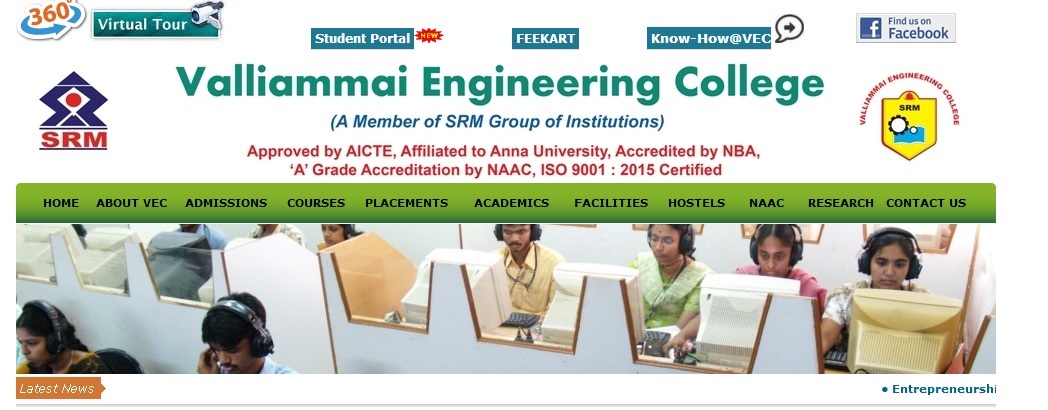CC7007 Metrology & Non Destructive Testing M.E Question Bank : valliammai.co.in
Name of the College : Valliammai Engineering College
University : Anna University
Department : Mechanical Engineering
Subject Code/Name : CC7007-Metrology & Non Destructive Testing
Degree : M.E CAD/CAM
Year : II
Semester : III
Document Type : Question Bank
Website : valliammai.co.in
Download :https://www.pdfquestion.in/uploads/va…%20Testing.pdf
Valliammai Metrology & Non Destructive Testing Question Paper
Unit I
Measuring Machines :
Part A :
1. What is microscope
2. What is the use of CMM
3. What are the important features of CMM
Related : Valliammai Engineering College CC7008 Quality Management Techniques M.E Question Bank : www.pdfquestion.in/2847.html
4. What are the errors in CMM
5. What is meant by axial length measuring accuracy
6. What are the applications of CMM
7. Compare CMM and UMM
8. What are the Mechanical accuracyWhat is the use of image shearing microscope.
9. Differentiate between sensitivity and range with suitable example.
10. Define system error and correction.,

11. Define : Measurand.
12. Define : Deterministic Metrology.
13. Define over damped and under damped system.
14. Give any four methods of measurement
15. Give classification of measuring instruments.
16. Define True size :
17. Define Actual size
18. What is Hysteresis
19. What is Resolution
20. Define Span
Part B :
1.Explain Briefly about Tool makers Microscope
2.Explain Briefly about CMM
3.Explain Briefly about UMM
4.Explain Briefly about Image Shearing Microscope
5.Explains briefly about use of microscope in metrology
6.Draw the block diagram of generalized measurement system and explain different stages with examples.
7.Distinguish between Repeatability and reproducibility
8.Distinguish between Systematic and random error
9. Distinguish between Static and dynamic response
10. Describe the different types of errors in measurements and the causes. 6. List various types of measuring instruments and explain each one of them
Unit II
Statistical Quality Control :
1. Distinguish between random causes and assignable causes in sqc.
2. Justify the 3s limits as control limits in any control chart.
3. Define operating characteristic function of a control chart. What is its importance in process control?
4. What is a c – chart. When and where it is used.
5. Explain cusum charts.
6. Define the terms : aql, ltpd, producers risk, consumers risk.
7. Distinguish between multiple sampling plans and sequential sampling plans.
8. Explain the technique of curtailed inspection.
9. What is meant by acceptance sampling
10. What is control planning
11. Define fmea
12. Defibe gauge repeatability
13. How will you study the process capability of a production process?
14. what are the important indices for measuring the process capability
15. derive the asn and ati functions for a dsp and draw their general
16. What the salient features of dodge- roming tables
17. What are statistical measyre tools
18. What is theory of probality
19. Define sampling
20. What is control charts
Part B :
1.Explain Briefly on statistical measure tools
2.Explain briefly on process capability
3.Explain briefly on theory of probality
4.Explain the construction and interpretation of mean chart and range chart.
5.Describe various ways in which a control chart may be modified to meet special situations.
6.How will you study the process capability of a production process? What are the important indices for measuring the process capability?
7.Derive the ASN and ATI functions for a DSP and draw their general shapes.
8.Describe an item by item sequential sampling plan by attributes.
9.Derive the acceptance and rejection lines of such a plan with a given producers risk and consumers risk.
10.The measurement X on an item follows a normal distribution with known standard deviation. The item is considered acceptable if X is large. Derive a SSP for a specified a and ß
Unit III
Liquid Penetrant And Magnetic Particles
1.What are characteristics of liquid penetrants
2.What is penetrating agents
3. How is the size of a liquid penetrant indicat ion usually related to the discontinuity
4. Which of the following statements accurately describes the capabilities of liquid penetrant testing
5.What type of solvent removers may be used with a solvent removable penetrant?
6.What is the preferred pre-cleaning process for removal of oil and grease
7.What is the danger associated with using a wire brush during pre-cleaning?
8.Which type of emulsifier is designed to be used as a ‘scrubber’?
9. What is a disadvantage of using the fluorescent penetrant process?
10. What is the minimum time considered necessary for dark adaptation of the eyes prior to evaluating the results of a fluorescent penetrant test?
11. Which type of penetrant proces s would be best suited to the detection of wide, shallow discontinuities?
12.What is a disadvantage of the solvent removable penetrant process?
13.List four cleaning processes that are to be avoided
14. Which of the following statements accurately describes the capabilities of liquid penetrant testing
15.What type of solvent removers may be used with a solvent removable penetrant?
16.What is the preferred pre-cleaning process for removal of oil and grease
17.What is the danger associated with using a wire brush during pre-cleaning?
18.Which type of emulsifier is designed to be used as a ‘scrubber’
19.What are the principle operation of magnetic particles
20. Applications of liquid penetraring particles